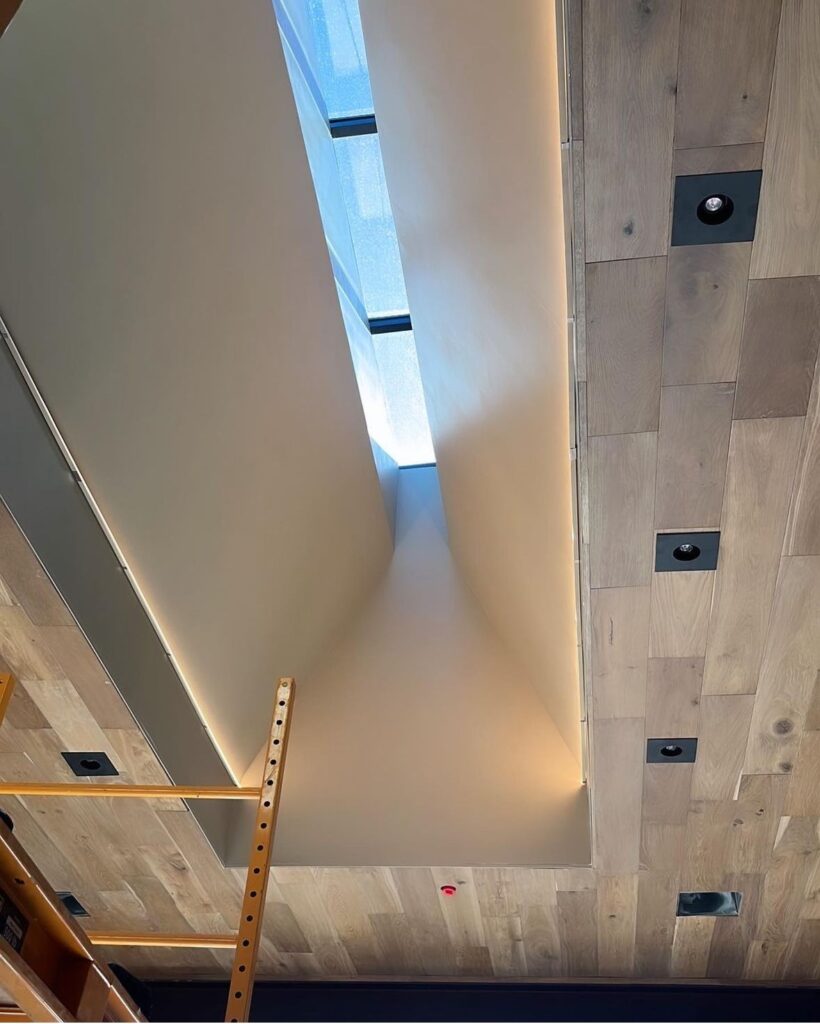Project Spotlight: Step Inside a Rammed Earth Desert Oasis
Follow along as we unveil Morning Dove, a sustainable oasis in the heart of the Mojave Desert. Explore the marvels of designer Tracey Stehle-Cavaniola’s rammed earth home in this behind-the-scenes look at one designer’s process.
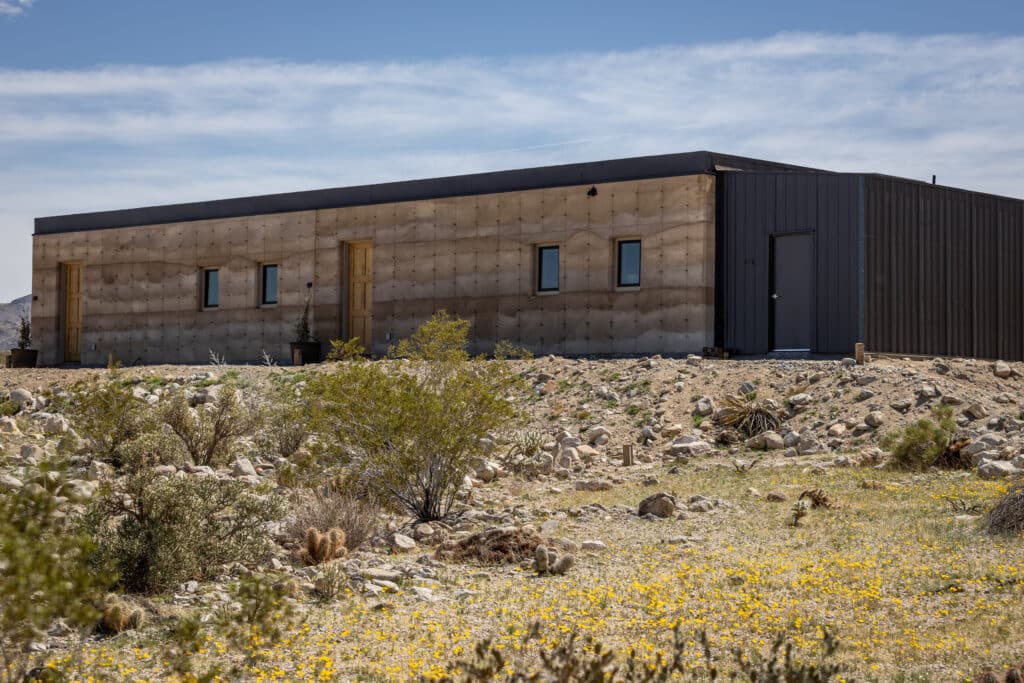
Twentynine Palms, California, is the gateway to the Mojave Desert and Joshua Tree National Park. It’s also home to one of the most spectacular and sustainability-minded homes we’ve ever seen — a property called Morning Dove.
It first caught our attention because its owners sourced several NativeStone bathtubs for the unique structure, and it has kept our attention because it’s a marvel of architecture and entirely aligned with our eco-friendly mission.
And once we heard the story of its two fated-to-meet owners, Tracey Stehle-Cavaniola and Beau Campbell, well, we were smitten. Native Trails feels so fortunate to be a small part of the story of this desert home. We hope you enjoy it, too.
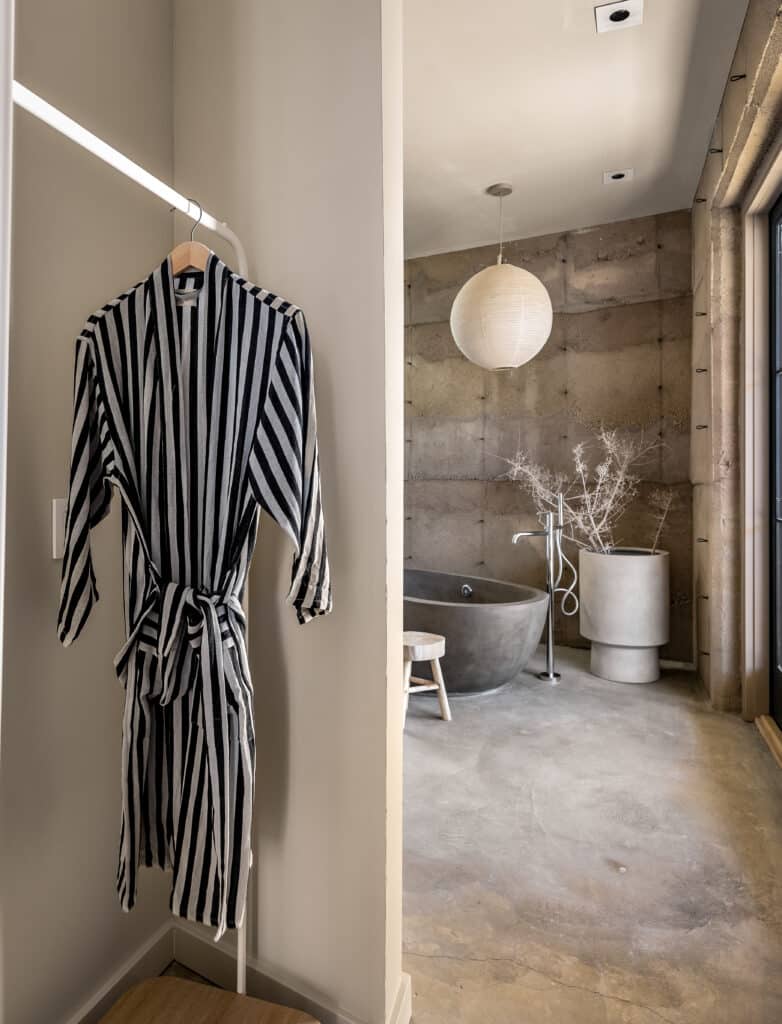
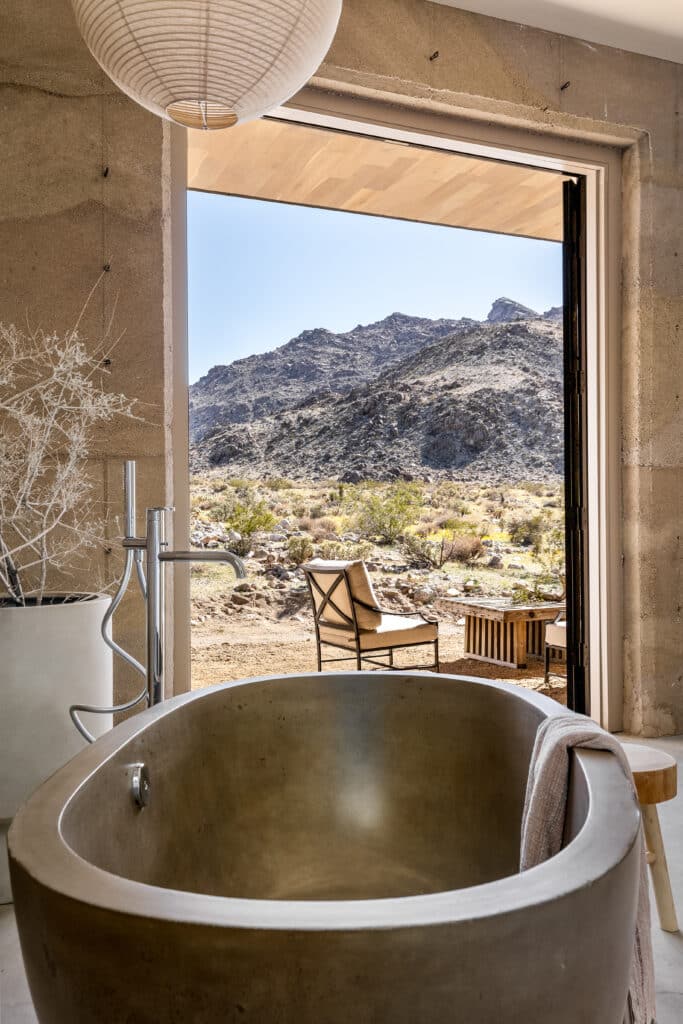
Tracey, what’s the backstory to this house?
After getting my interior design degree from Colorado State University, I landed in Sag Harbor, NY, where I and my then-husband opened Cavaniola’s Gourmet Cheese shop — featured on Ina Garten’s Barefoot Contessa and Martha Stewart many times. During a soul-searching solo road trip in my mid-thirties, I stayed a few nights at the historic 29 Palms Inn because I loved the retro look of the different-colored adobes. I had no idea that after checking out of the Inn, I would be back to this unique and random city in the desert with the love of my life, to build our life together and call it home.
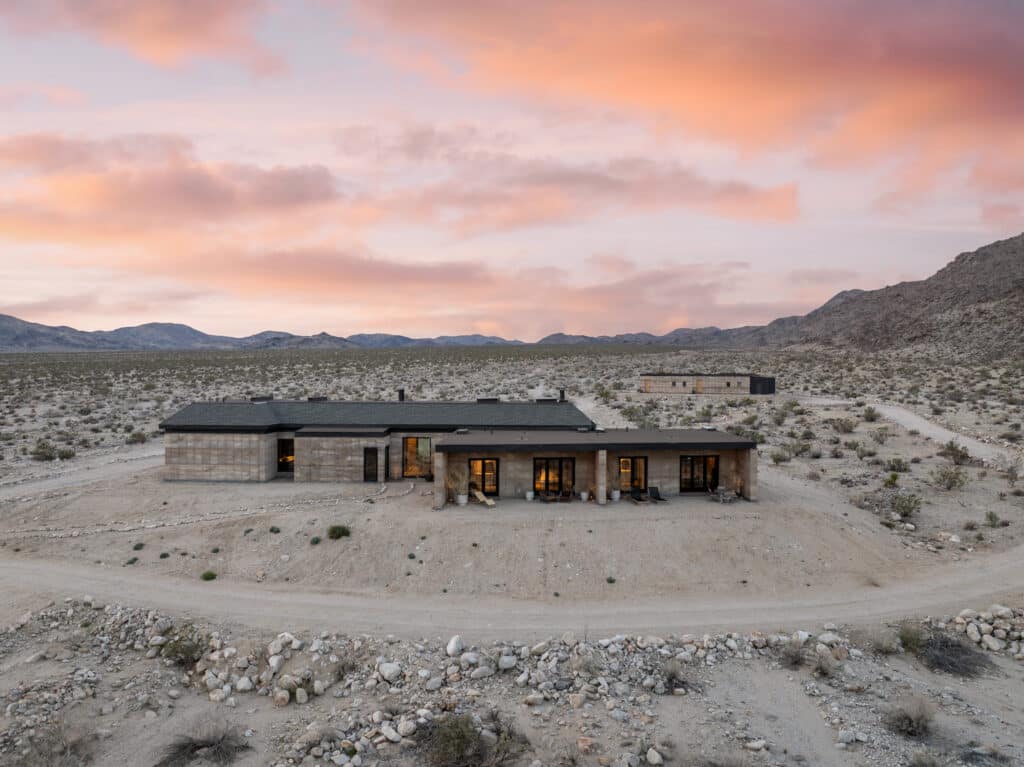
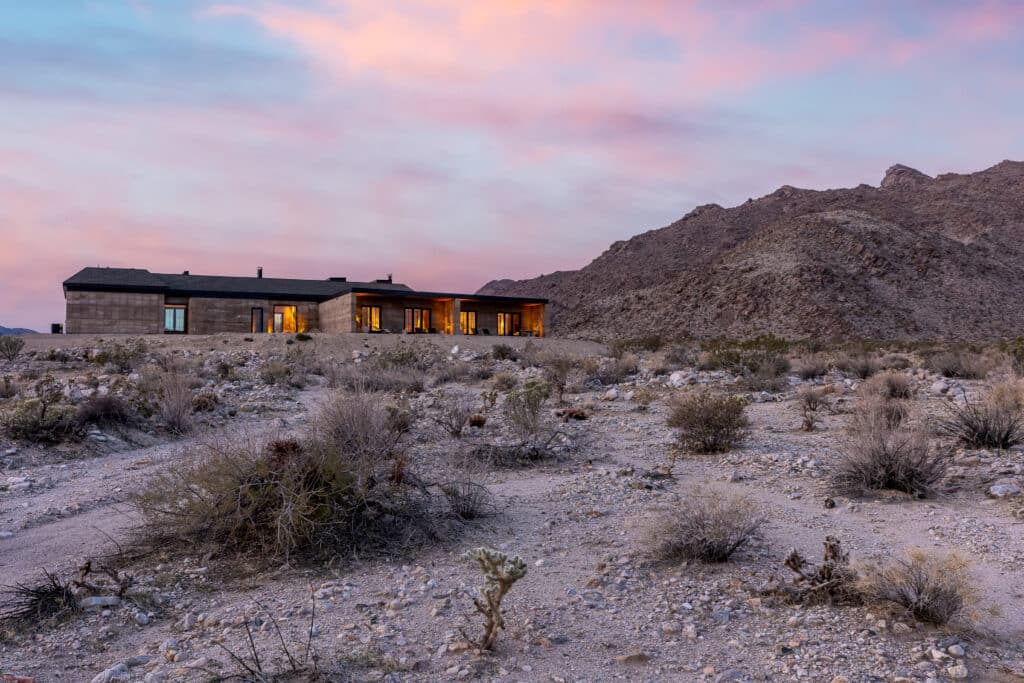
I returned to Sag Harbor to face down some major life changes, including a divorce. I also had designs on a new job and soon went to work restoring an abandoned Bulova Watchcase factory from the 1800s and developing it into a 63-unit condominium. That’s where I met Beau Campbell, a man who had been hired as part of the construction team and with whom I had an instant connection. It became more and more obvious that he and I were destined to meet, develop an amazing partnership, not only in work but in our approach to life. It only continued to grow, and we realized we wanted to invest in each other and our future.
On a trip to Palm Springs in 2017, something enticed us to start looking at properties in Joshua Tree and Twentynine Palms. This search amazingly brought me full circle back to the Inn with Beau, and we ended up buying 20 acres up the hill behind 29 Palms Inn on that trip. The moment we purchased the land I started dreaming, designing and planning, and Beau encouraged me and let me.
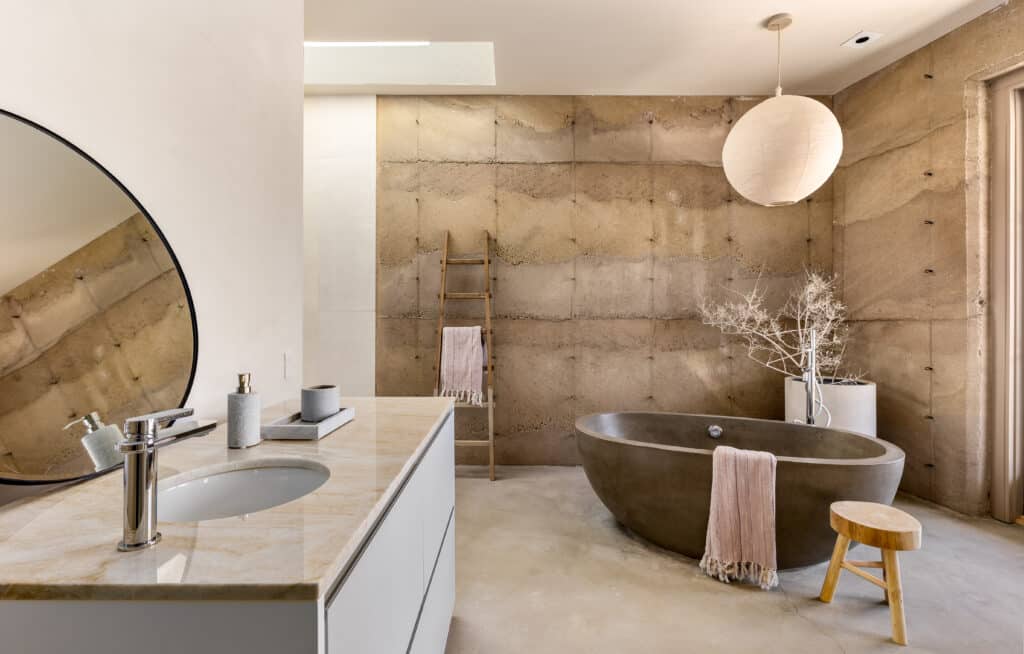
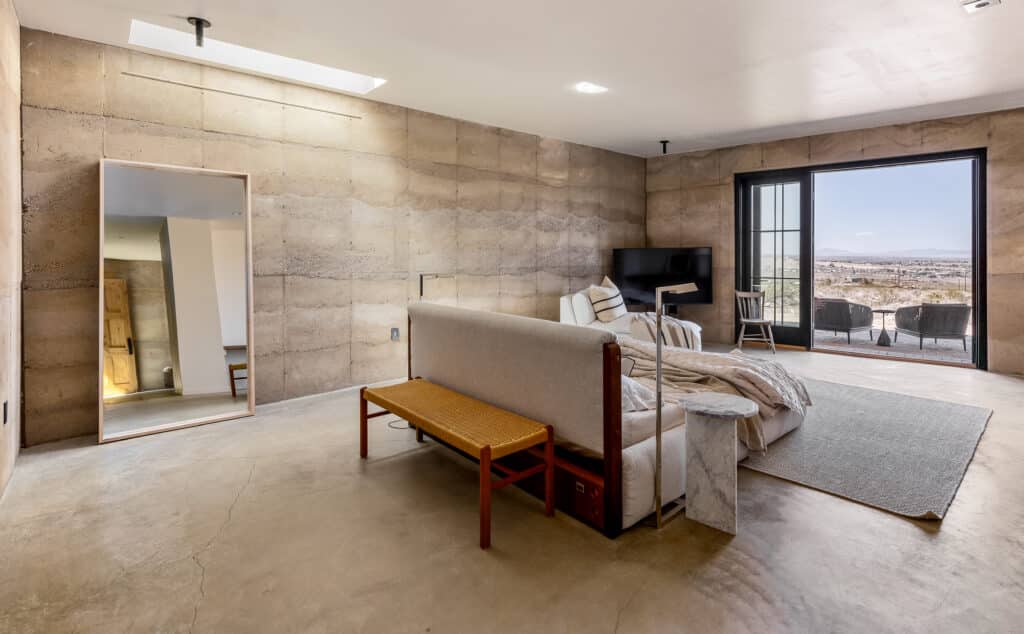
He has always supported me and thought I was amazing. I only started to believe it when I heard it coming from him. Over the next five years, we designed it, drew it, specified it, priced it, revised it, edited it and applied many, many times for a construction loan until one finally came through.
Beau has knowledge of all facets of construction, from earth-moving to waterproofing, code to carpentry. The key in this project was that he was not just the guy who talked about what he knew and hired the other guys to do the work, he was actually the guy living on the property and waking up every morning to DO the work. It still amazes me what he is capable of.
If he says he will get it done, there is no reason to doubt. Whether it is to rid his body of stage 4 colorectal cancer (which he was diagnosed with in 2019) or to build a 7,000-square-foot dream home out of a construction method he has never used before or live in a trailer for a year-and-a-half in the high desert with only a generator for power.

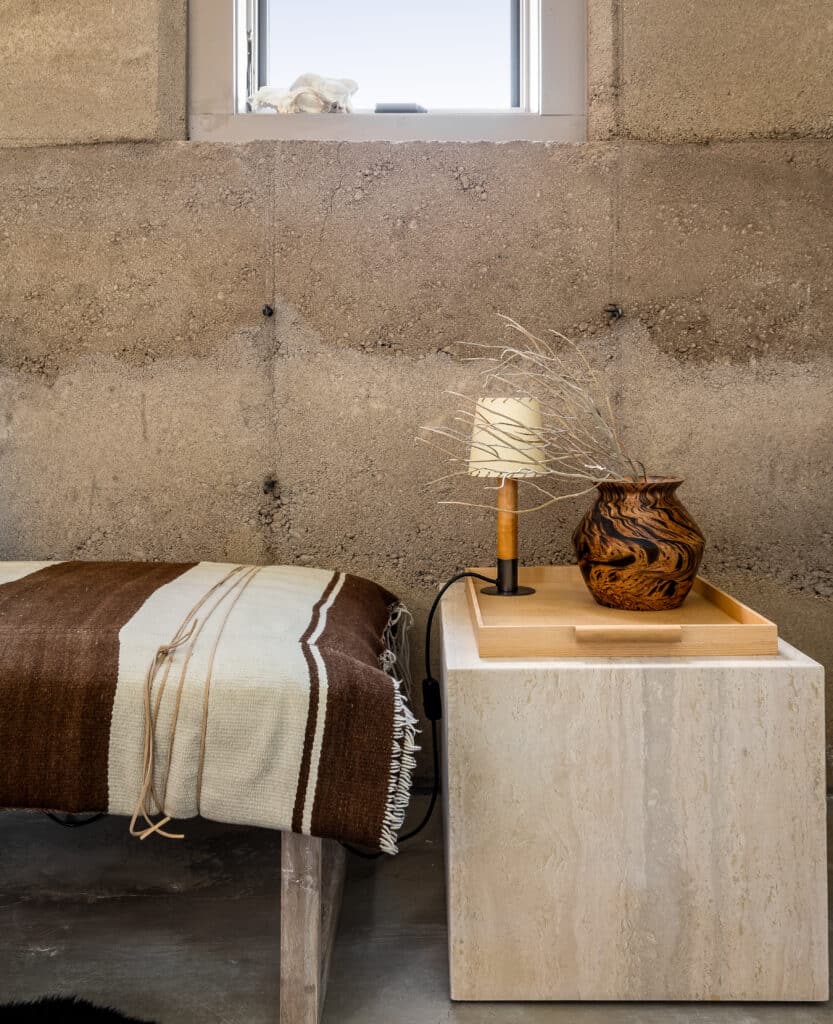
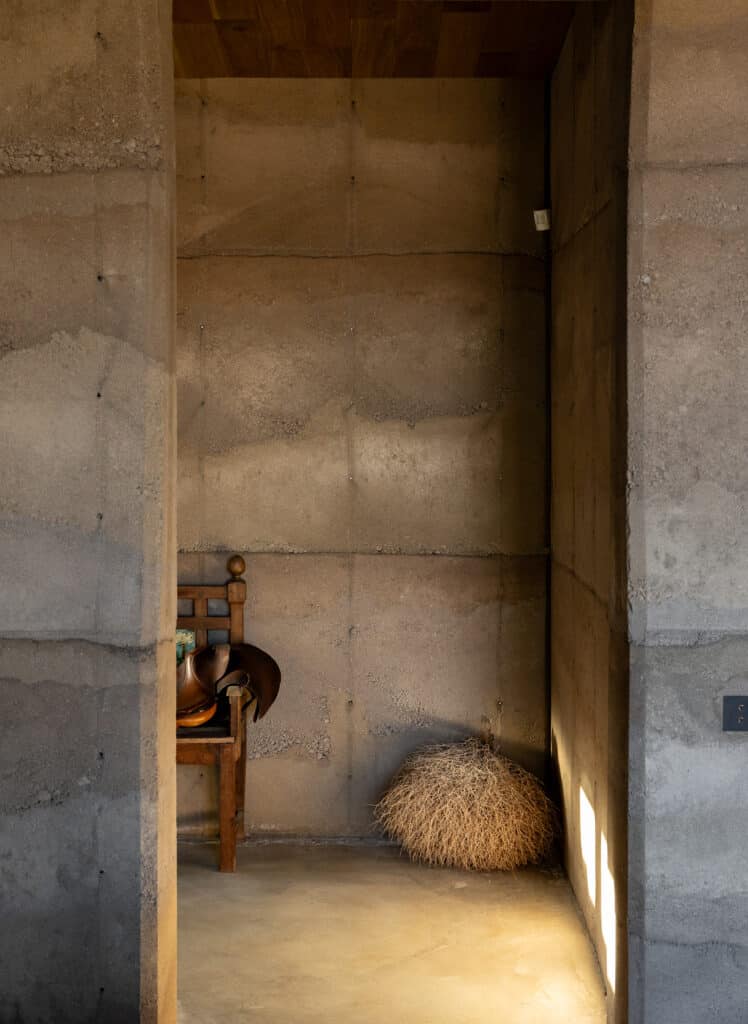
Can you explain what a rammed earth home is?
Rammed earth uses a combination of native materials, a binding agent and colorant to mix into the material by batch to achieve the layered look. In our case, we took the soil from our property, which we realized is mostly granite, screened it to get the consistency we wanted — we wanted a rougher, rustic look — and mixed it with specific colored mortars. The mixture is poured into forms and compacted by a tamper.
Once the first layer is completed, the forms are moved, and the process is repeated. It is an ancient construction method in Europe, New Zealand, Africa and drier climates. In the past 10 years it has gained momentum in the U.S. and Canada. I am reading more and more articles about it being used in Northern California and Arizona as well, so much so that construction companies have been formed that solely focus on building rammed earth.
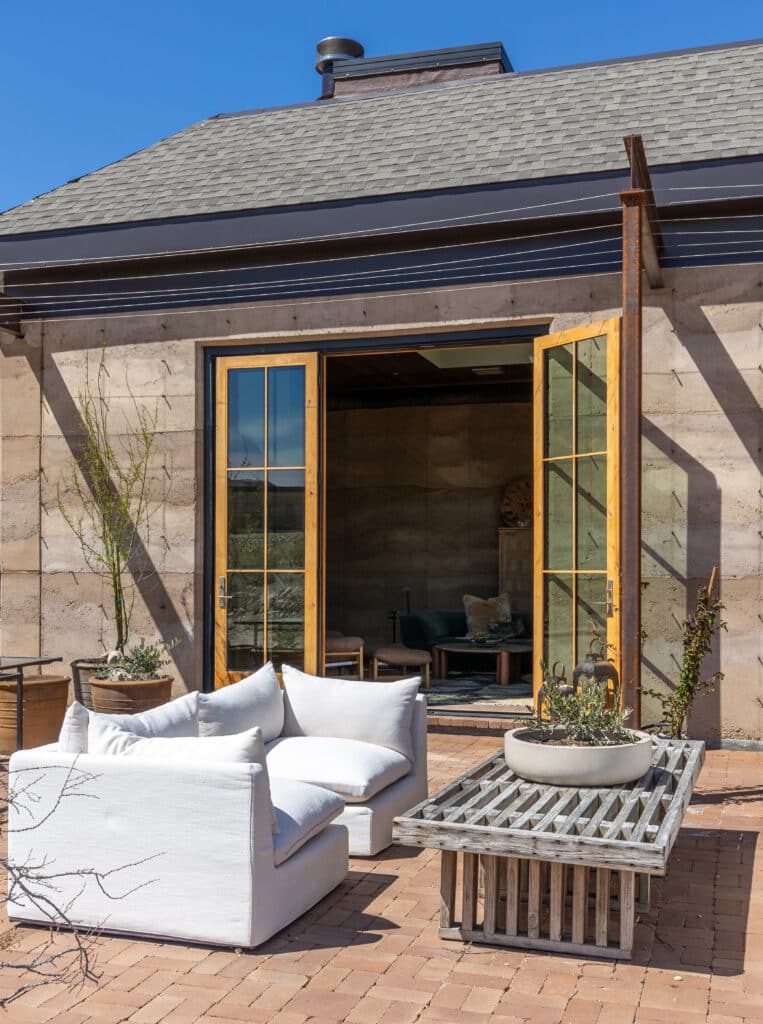
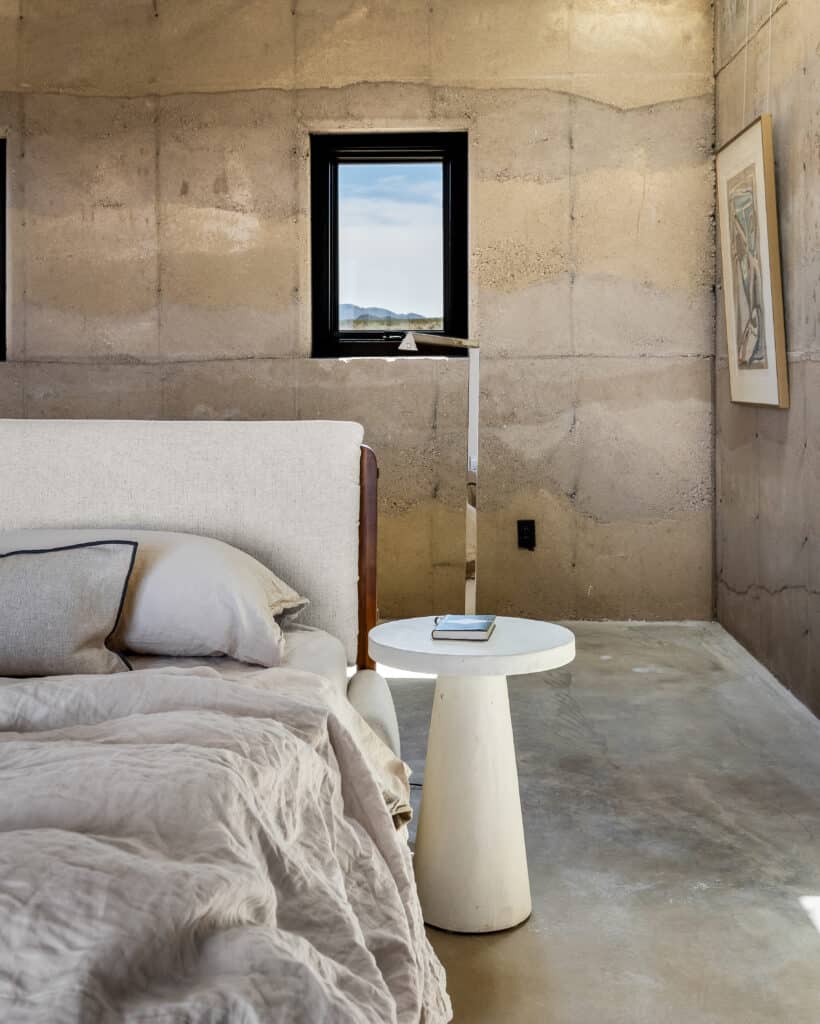
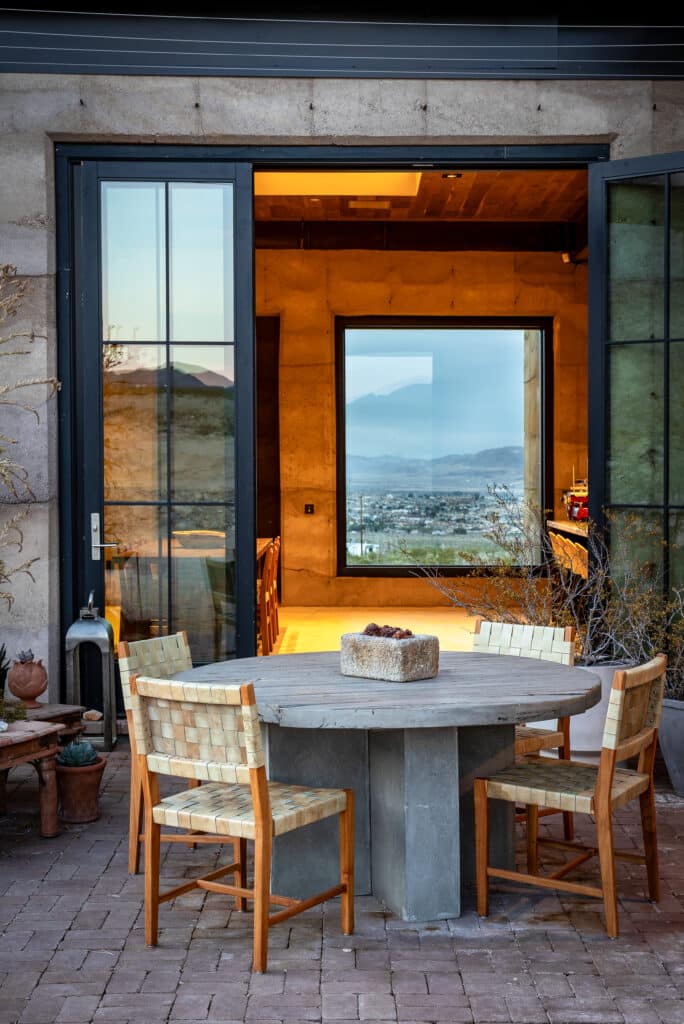
What made you aspire to build and live in a rammed earth home?
I’ve always had an interest in sustainable design because it just makes sense to me that humans have the ability to create anything; why would they not build healthy environments that do not further separate from our surroundings, but rather build a connection to a sense of place? Sick Building Syndrome was just being recognized when I was studying interior design in college and it made me question how I want to live and made me realize that the decisions that I make designing and specifying interiors, that others live and breathe in, can be very significant. The materials, in particular, that we use to build, have a serious impact in our lives.
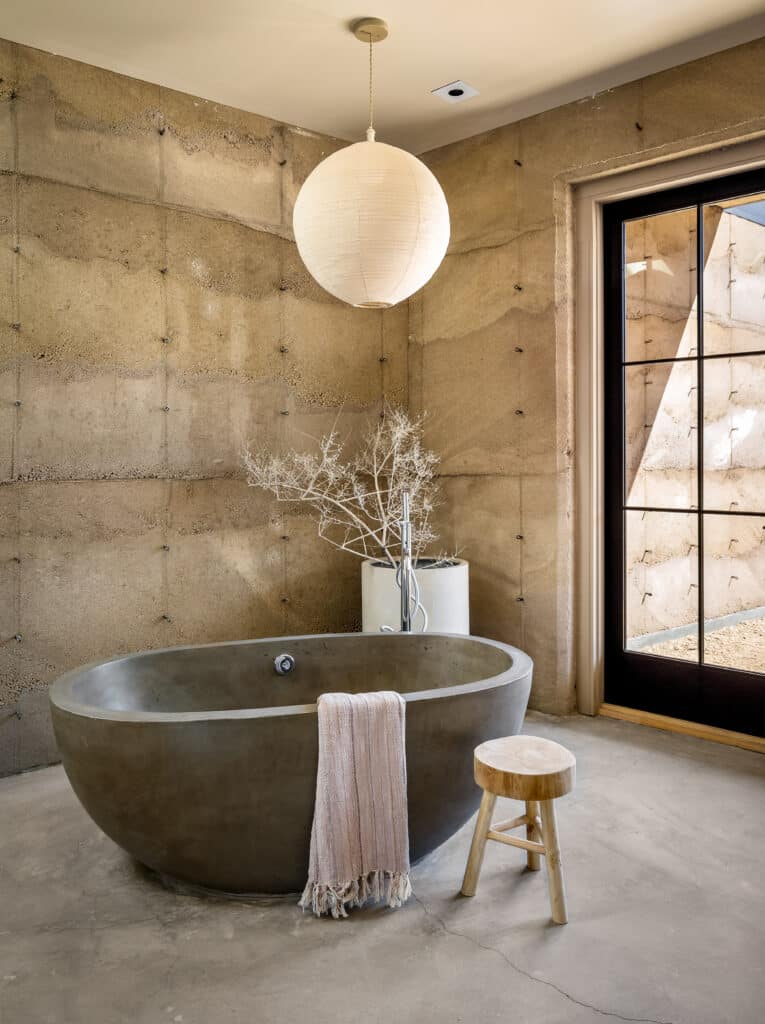
Why did you choose NativeStone tubs for this project?
NativeStone was a no brainer when I started looking into tubs. Very simply, it was chosen as the heart of our bathroom suites, and we actually used it as a stepping stone for building the rest of the finishes in the bathroom.
I ordered the samples, and I have to say they are better than any photo could portray. You know the tub is built out of concrete, but it feels warm due to the coloring and matte finish. It felt like to me that the tub was shaped out of the earth, and that was EXACTLY what our concept was. We chose the color we chose knowing we were going to have concrete floors, and I wanted to get the floor color as close to the tub color as possible to actually make it look like the tubs were formed from the ground.
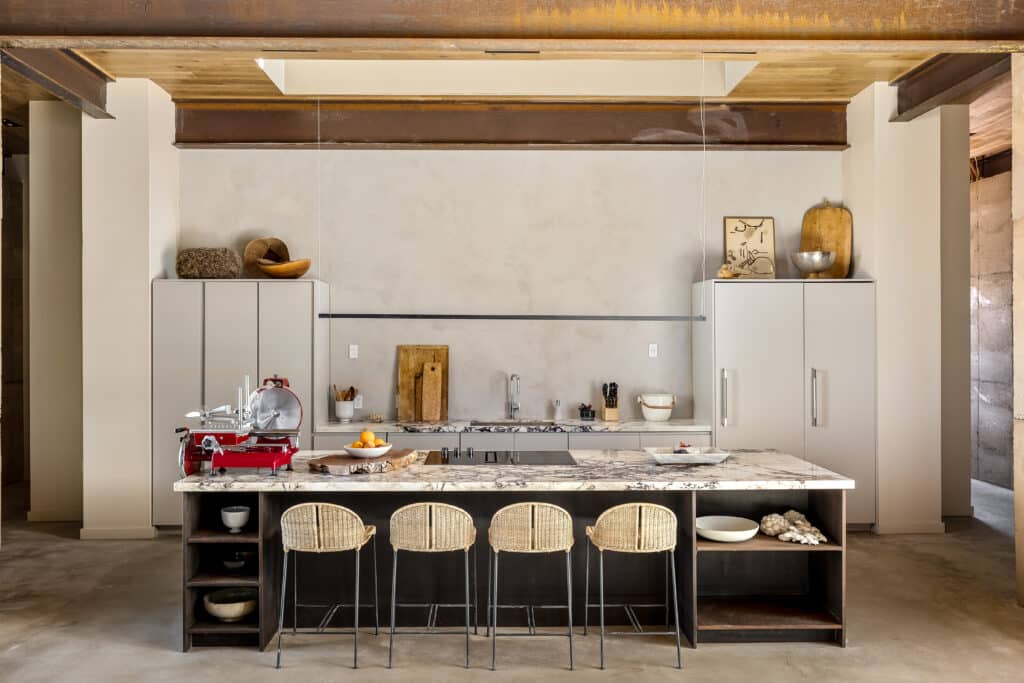
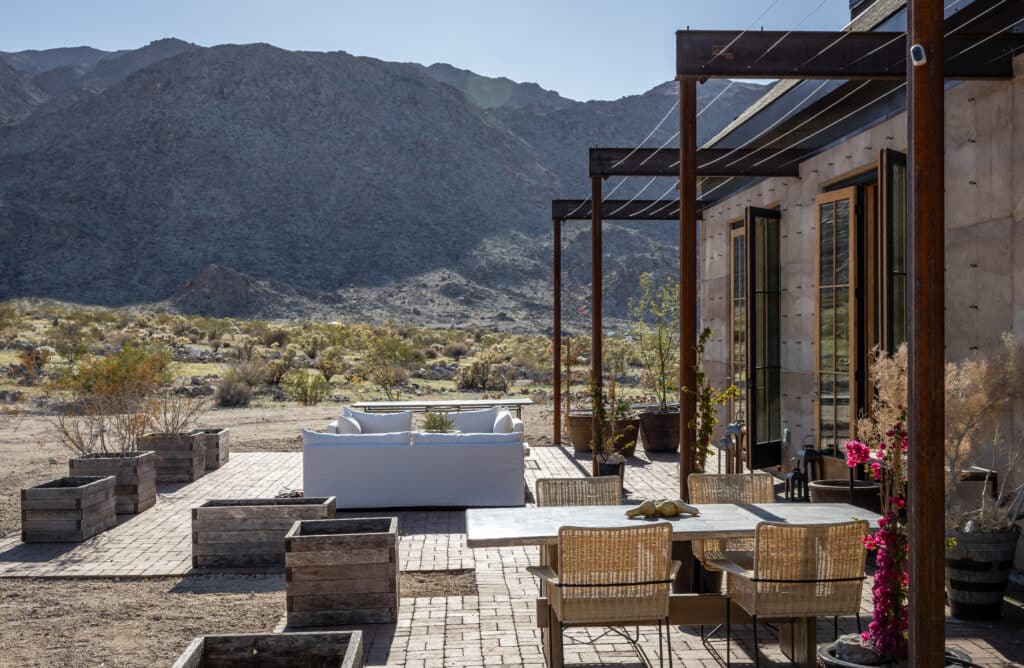
I love these tubs so much, not only for the way they look, but I was debating between the 72” and the 62” and decided on the smaller size, which actually fits two people perfectly. A funny story was that after having just installed and hooking up the plumbing to the tubs, we tested one for any leaks and to make sure they held water and drained properly. We filled a tub, left for dinner and came back to a squirrel in the tub! It was something we certainly did not expect but the tub and the plumbing passed the water test and the squirrel was abruptly rescued and told to find another bathing hole … OFF PROPERTY!
How did you hear about Native Trails? Had you worked with our products before?
I am constantly researching materials and products for fun. I searched natural stone tubs and fairly quickly discovered Native Trails. The price point was drastically different from a natural stone tub and availability was no issue. I have never worked with any of the products before, but certainly have it on my shortlist of items that can truly make a space special.
I could not conceive of specifying a fiberglass tub that felt contrary to the concept of the entire design. No doubt the Avalon tubs allowed us to carry our concept through with an end result that’s nothing less than stunning.
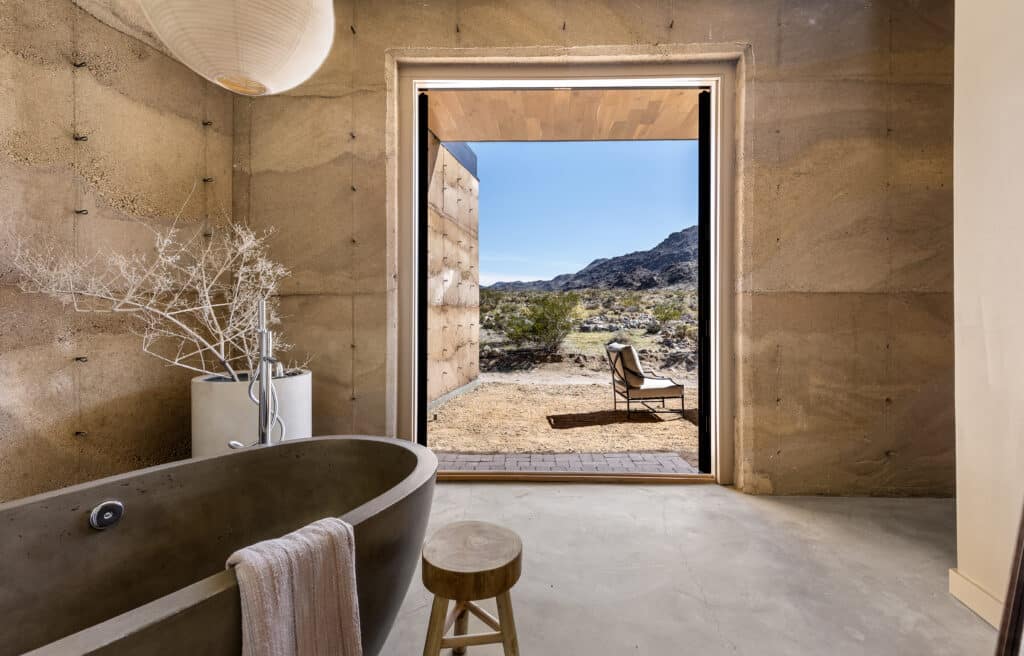
What other considerations went into designing these bathrooms?
The other element that had to come through was being connected to the outside at all times in the house, but also being protected from the extreme elements because when it is hot, it is extremely hot. The bathroom has a skylight in the shower to make you feel as though you are outdoors, but at no point of the day is the sun streaming in to overheat the space, which also keeps the space cool overall without sacrificing natural daylight.
And due to the desert temps dropping as soon as the sun goes down, we have radiant floors throughout to make sure it heats evenly when the temps start to dip.
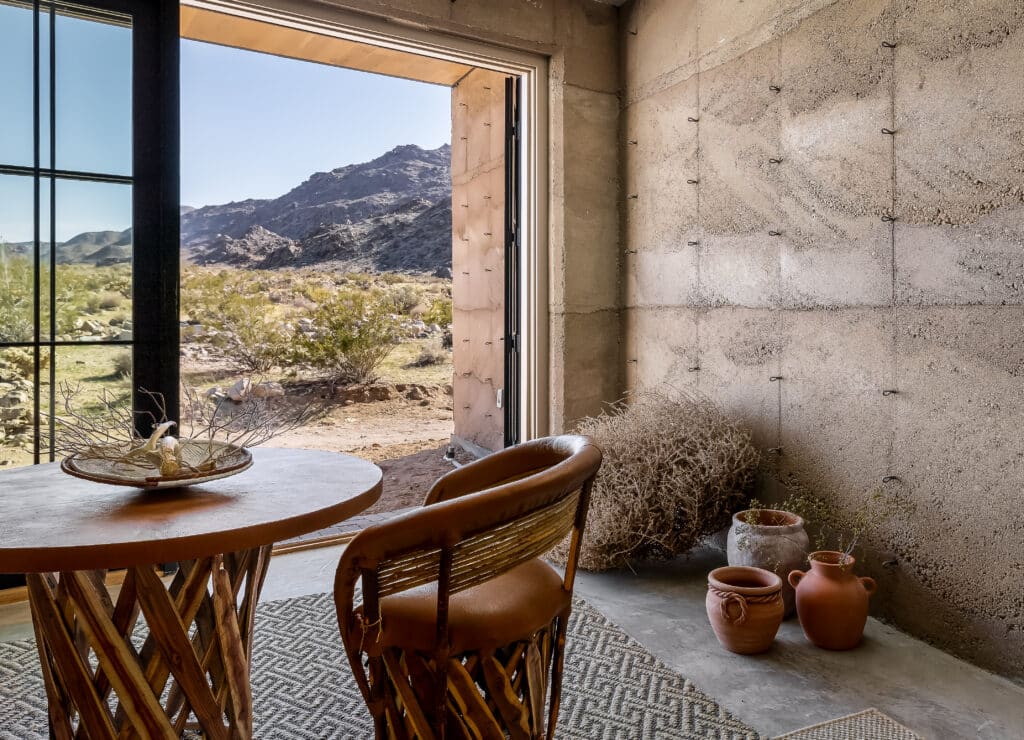
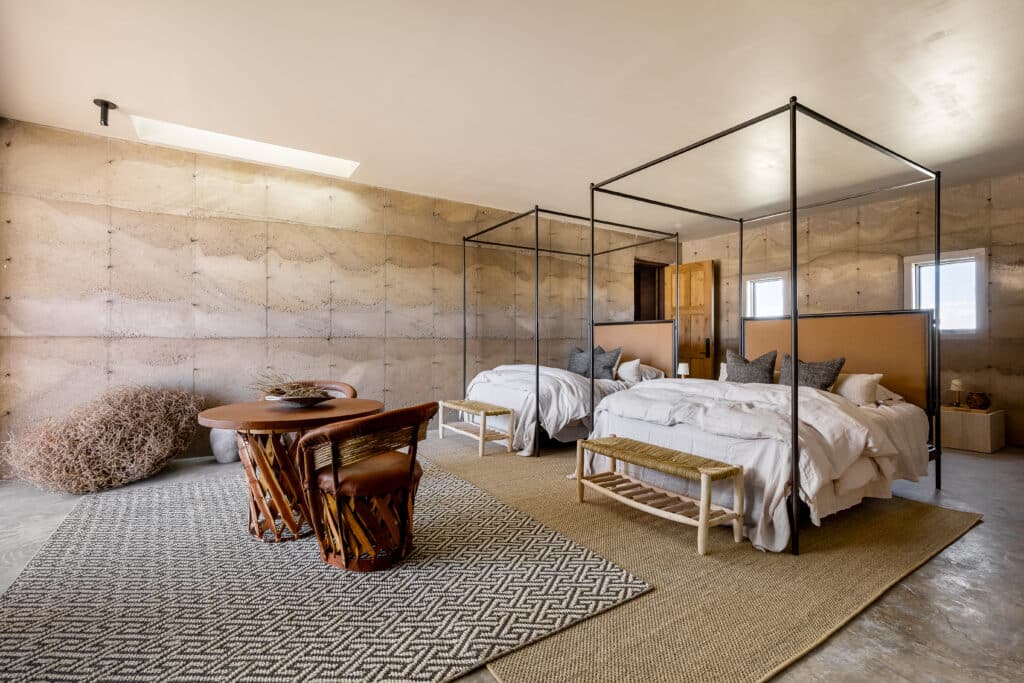
Where did you draw inspiration for this home?
American Southwestern Culture, Colorado/New Mexico (where I grew up), Montana (where Beau’s family is from), Amangiri Resort in Utah, travel destinations in Ibiza Spain, and classic, timeless Old World villas in Italy where materials stand the test of time.
We are also property managers and believe the less maintenance a house requires, the more you are able to enjoy it. A lot of choices and planning went into building a home that could be little or no maintenance. My color choice for the tub actually was decided by my feeling of the darker color being less maintenance.
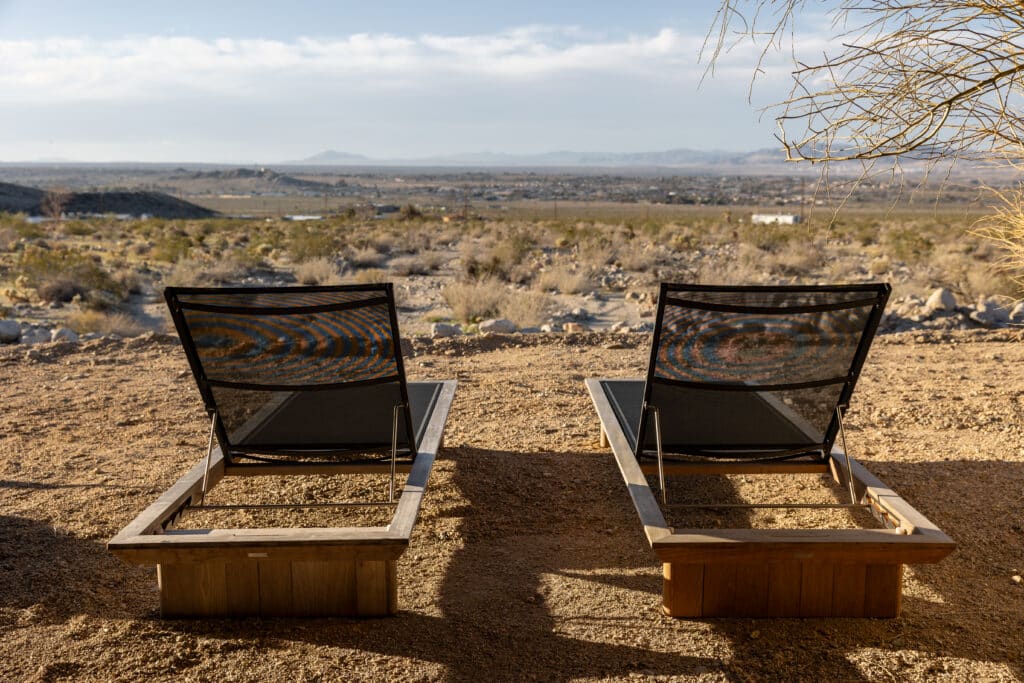
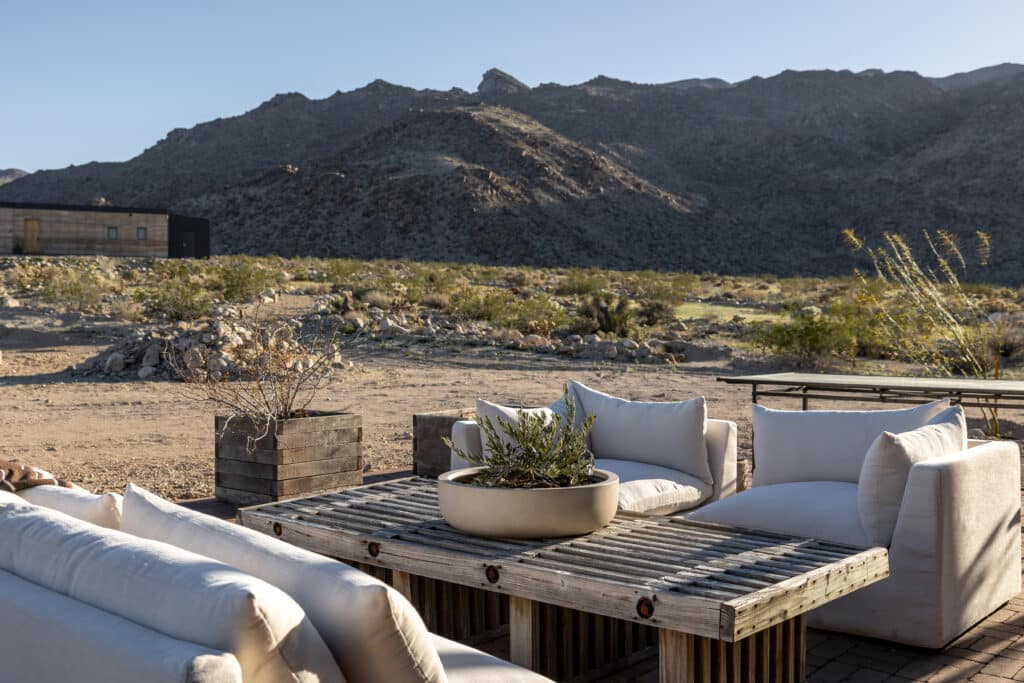
Where did the name Morning Dove come from?
In many cultures, seeing two mourning doves together is a sign of enduring love and partnership. It’s a symbol of a strong bond that can withstand the test of time.
All images courtesy of: Drew Metzger

